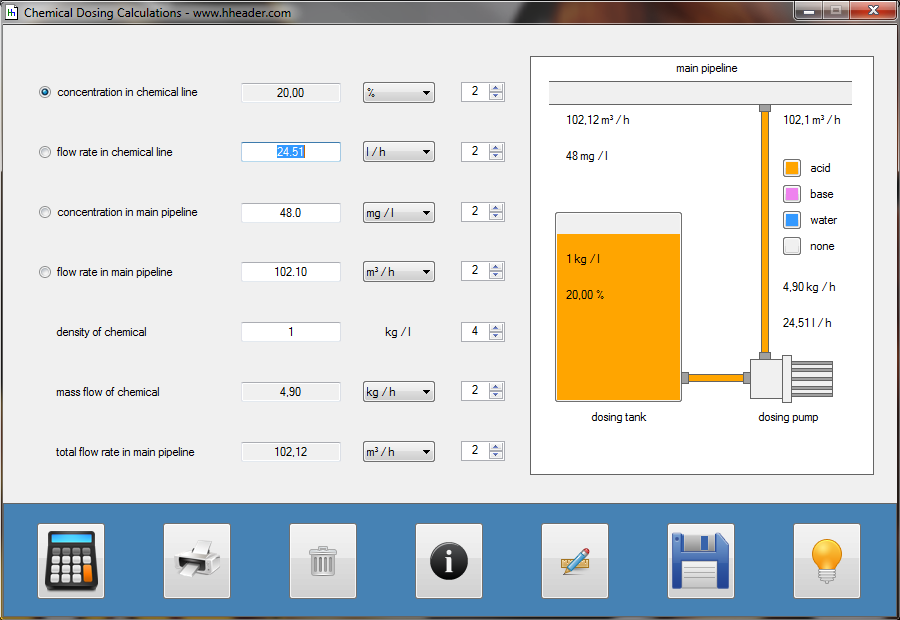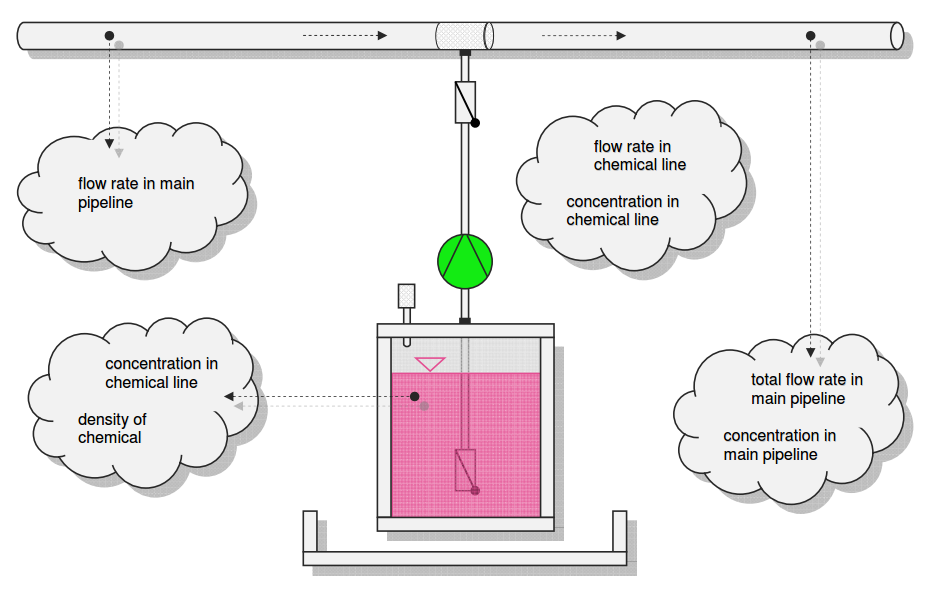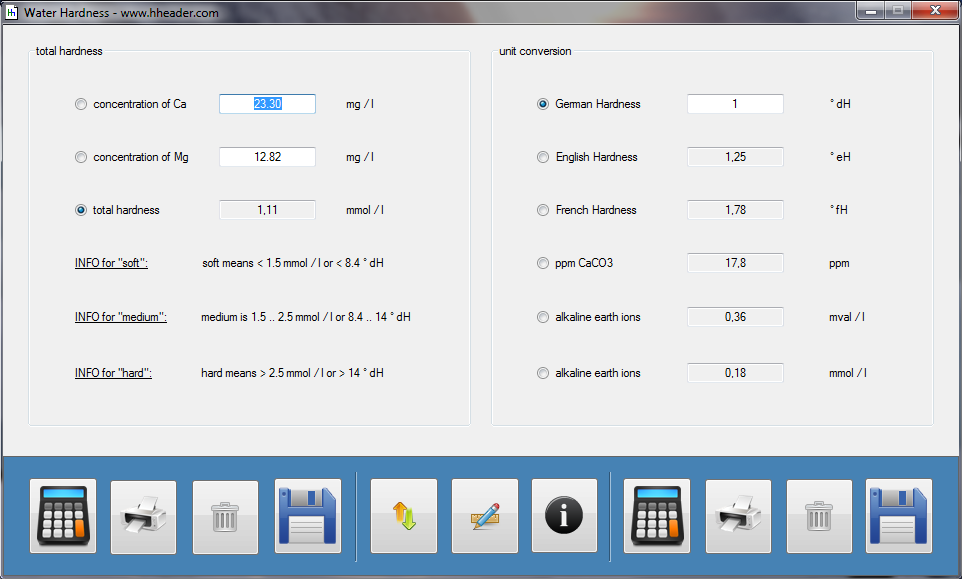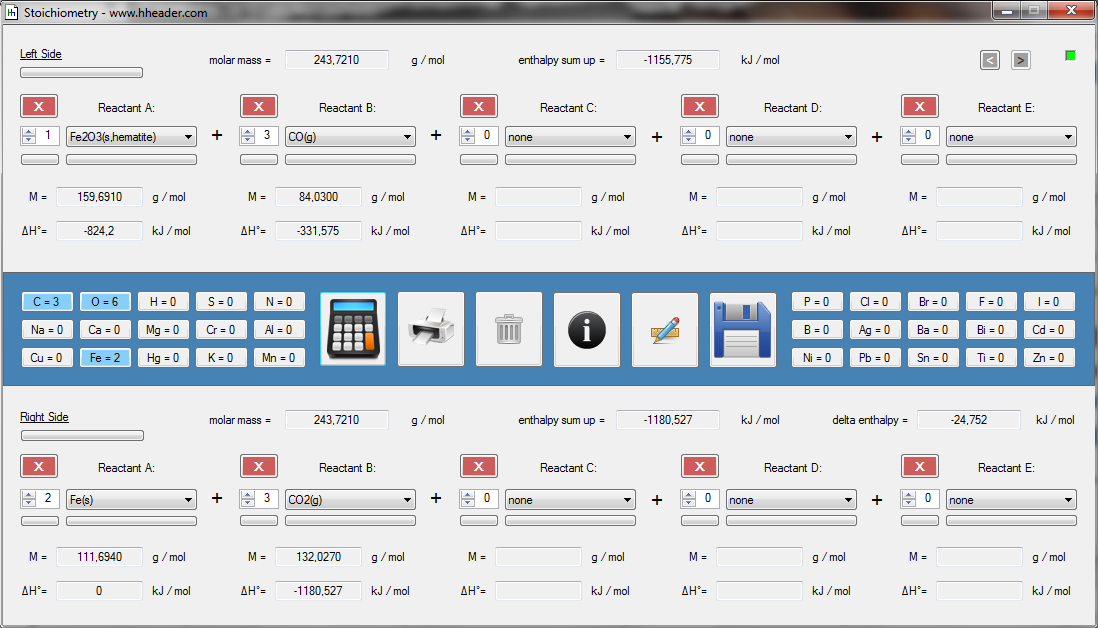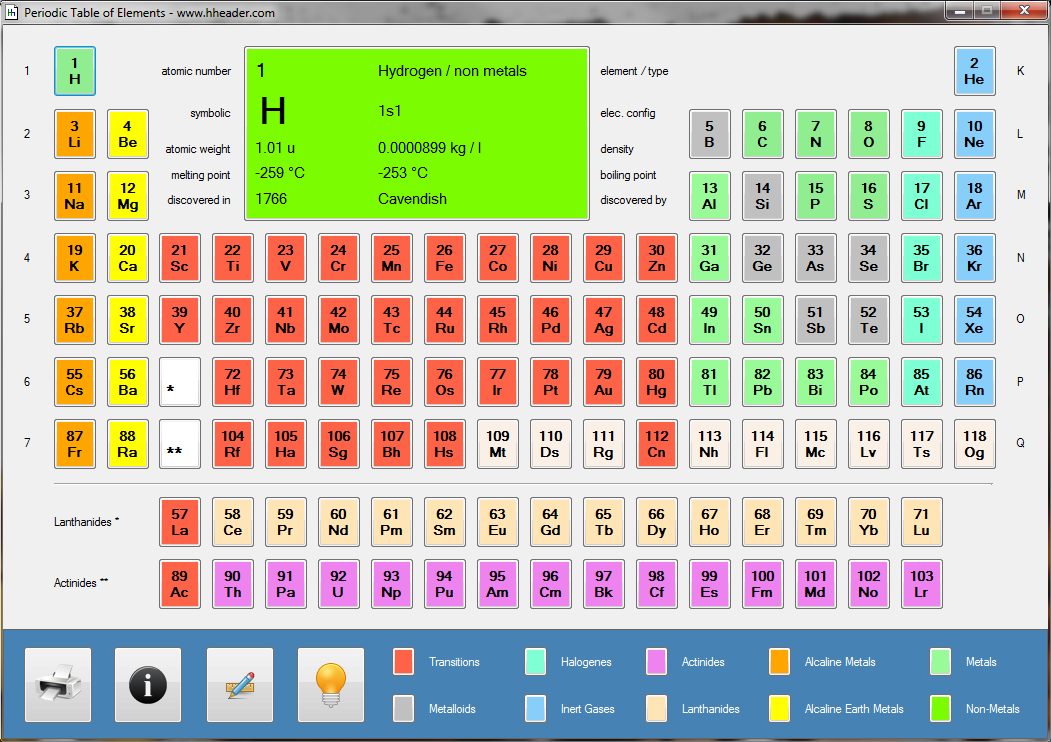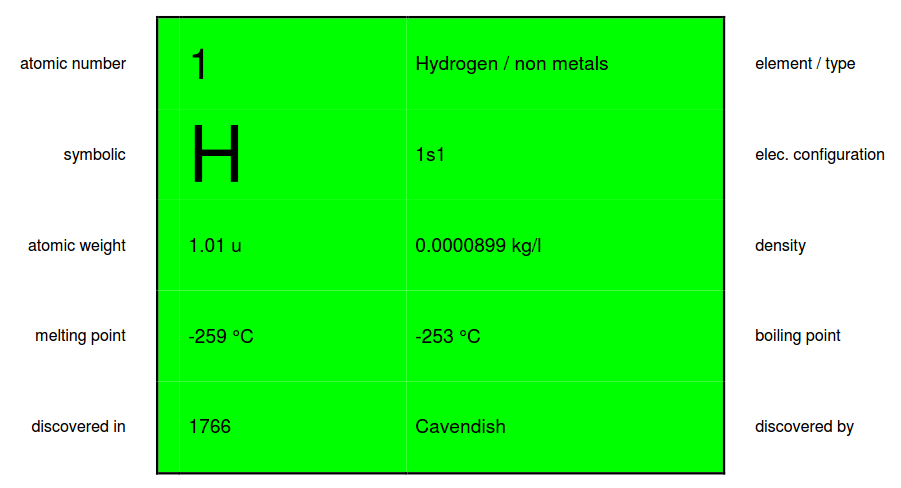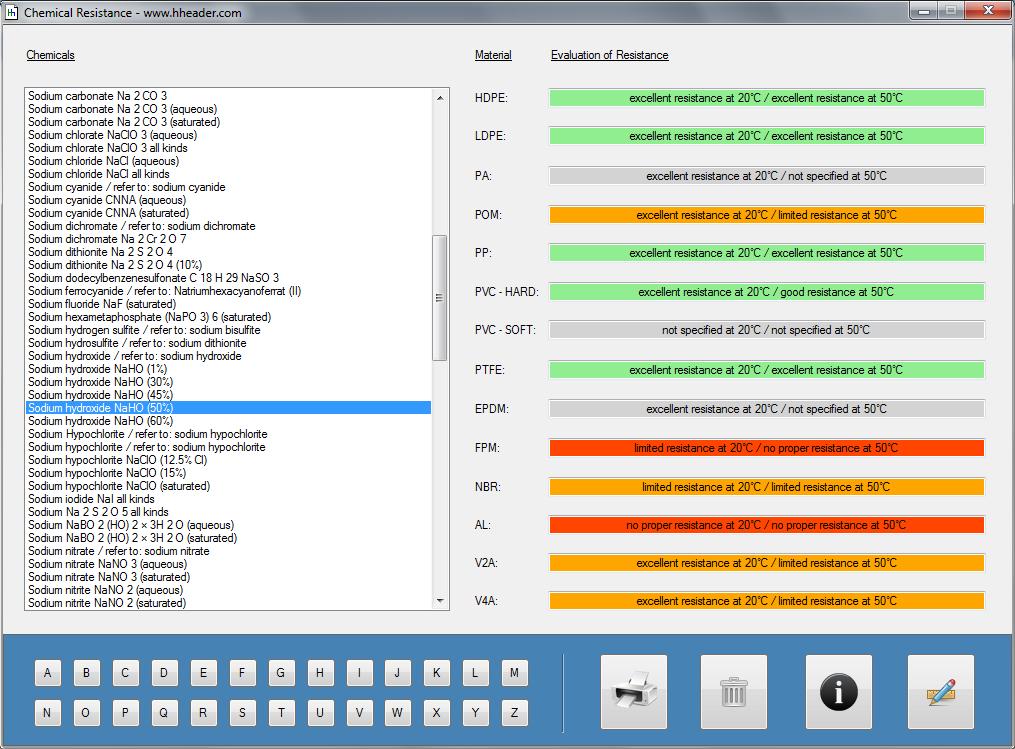|
(c) 2012 - 2017 * updated MAR 2020 |
||||||||||||||||||||||||
 |
||||||||||||||||||||||||
 |
||||||||||||||||||||||||
 |
||||||||||||||||||||||||
 |
||||||||||||||||||||||||
|
|
|
Category 3 - Chemical: Water HardnessSometimes it is useful to evaluate the grade of water hardness in order to have a basis for the design criteria for the right water treatment or to find an explanation for the actual circumstances. Although there are only two kinds of matter as hardness compounds available in the water which are calcium and magnesium, there are many different international units describing the grade of water hardness. At least the total hardness is a measure for dividing up the water into mainly three degrees of hardness, which are: soft means < 1.5 mmol / l or < 8.4 °dH, medium is 1.5 .. 2.5 mmol / l or 8.4 to 14 °dH and hard means > 2.5 mmol / l or > 14 °dH. |
||||||||||||||||
|
|
||||||||||||||||
Category 3 - Chemical: Crystalization Diagram NaOHCaustic soda (NaOH) is used in the field of plant and process engineering for many different tasks and purposes. For the different use cases caustic soda is available in different concentrations. While transportation, storage and using the caustic soda one point is mandatory to consider: the crystallization temperature. The crystallization temperature depends on the concentration of the caustic soda solution. Be aware that if the crystallization temperature is disrespected harmful, time-consuming and expensive damages can occur by blocked pipe work due to crystallized caustic soda. It is an important fact that the crystallization temperature is in a not linear relation to the concentration. It is a curve. |
||||||||||||||||
|
|
||||||||||||||||
Category 3 - Chemical: StoichiometryWorking in the field of plant and process engineering sometimes requires handling with chemical reactions. An equation for the chemical reaction is one way to describe the process of reaction. Not all the elements of the Periodic Table of Elements have an affinity to react with others. The program provides a selection of elements and molecules that are able to react with other elements and molecules. The selection is also divided up according to the aggregation state and the ionic charge. After the reactants with their stoichiometric factors are defined for both sides of the chemical reaction (equation), the compounds and the stoichiometric factors can be checked. |
||||||||||||||||
|
|
||||||||||||||||
Category 3 - Chemical: Periodic Table of ElementsIn the Periodic Table of Elements the known elements are arranged according to their atomic number. The Periodic Table of Elements contains information about the elements which describe their chemical and physical properties or allow conclusions to their chemical and physical properties. This program provides, as far as known, the following information: atomic number, element / type, symbolic, elec. configuration, atomic weight, density, melting point, boiling point, discovered by and discovered in. |
||||||||||||||||
|
|
||||||||||||||||
Category 3 - Chemical: Chemical ResistanceFor the plant design criteria, especially for the selection of a proper pipe work and gasket material, it is important to consider the chemical resistance of the material to be selected in coherence with the used chemicals. The program can give support regarding this subject. Therefore an extensive selection of chemicals is provided. The chemicals can be selected via lists, which are arranged in an alphabetic order. For each letter of the alphabet there is a button provided which will link to the corresponding list of chemicals. The evaluation is done for two different temperature ranges: one is around 20°C and two is around 50°C. |
||||||||||||||||
|
|
||||||||||||||||
|
||||||||||||||||
|
